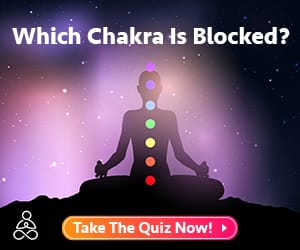
In this guide, we'll cover the basics of meditation, including what it is, how to do it, and the benefits you can expect to experience. So whether you're looking to reduce stress, improve concentration, or simply find more joy in your daily life, join us on this journey to discover the power of meditation.
GET STARTED TODAY WITHOUT ANY RISK!
Get 7 Days of Unlimited Access Right Now
for Free When You Download Our App!
A life of transformation begins with action. There are seven stages of meditation instruction on a single platform. Live monthly Zoom coaching and training sessions.
Get unlimited free access to the Meditation Life Skills app for 7 days by downloading it now! Visit MeditationLifeSkills.com.
Finding one's inner peace in today's hurried world may appear to be an insurmountable task. With constant distractions and stressors, it's easy to feel overwhelmed and disconnected from ourselves.
That's where meditation comes in. Meditation is a powerful tool that can help us tap into our inner calm and find a sense of peace amidst the chaos. If you're new to meditation, it can be intimidating to know where to start. That's why we've created this beginner's guide to meditation 101.
Benefits of Meditation
Meditation has been practiced for thousands of years and has been proven to have numerous benefits for both the mind and body. Here are just a few of the benefits you can expect to experience with a regular meditation practice:
Reduces Stress and Anxiety
One of the most well-known benefits of meditation is its ability to reduce stress and anxiety. When we meditate, we activate the parasympathetic nervous system, which is responsible for the body's "rest and digest" response. This helps to decrease the production of stress hormones like cortisol and adrenaline, resulting in a feeling of relaxation and calm.
Improves Concentration and Focus
Meditation has also been shown to improve concentration and focus. When we meditate, we train our minds to focus on a single point of attention, such as our breath or a mantra. This practice of focusing the mind can carry over into our daily lives, helping us to stay more focused and productive.
Increases Self-Awareness
Meditation can also help us to become more self-aware. Through the practice of mindfulness meditation, we learn to observe our thoughts and emotions without judgment. This can help us to identify patterns of thought and behavior that may be holding us back and make positive changes in our lives.
Understanding Mindfulness
One of the most popular forms of meditation is mindfulness meditation. Mindfulness is the practice of paying attention to the present moment with an attitude of curiosity and non-judgment. Here are a few key concepts to understand when practicing mindfulness:
Non-Judgment
One of the core principles of mindfulness is non-judgment. When we practice mindfulness, we aim to observe our thoughts and emotions without judging them as good or bad. Instead, we simply observe them as they are, without getting caught up in them.
Acceptance
Another key principle of mindfulness is acceptance. This means accepting the present moment as it is, without trying to change it or wishing it were different. This can be challenging, especially when we're experiencing difficult emotions or situations, but it's an important part of the practice.
Present Moment Awareness
The final principle of mindfulness is present moment awareness. This means focusing our attention on what is happening right now, rather than getting caught up in thoughts about the past or future. By staying present, we can experience life more fully and reduce stress and anxiety.
Different Types of Meditation
There are many different types of meditation, each with its own unique benefits and techniques. Here are a few of the most popular types of meditation:
Guided Meditation
Guided meditation is a form of meditation where a teacher or guide leads you through the practice. This can be especially helpful for beginners who may find it difficult to focus on their own.
Mantra Meditation
Mantra meditation involves repeating a word or phrase, known as a mantra, to help focus the mind. This can be done silently or out loud, and the mantra can be anything that resonates with you.
Mindfulness Meditation
As we've already discussed, mindfulness meditation involves paying attention to the present moment with an attitude of curiosity and non-judgment.
Body Scan Meditation
Body scan meditation involves focusing your attention on different parts of the body and noticing any sensations or feelings that arise. This can help to promote relaxation and reduce stress and anxiety.
Creating Your Meditation Practice
Now that you have a better understanding of the benefits and different types of meditation, it's time to start creating your own practice. Here are a few tips to help you get started:
Start Small
It's important to start small when beginning a meditation practice. Start with just a few minutes a day and gradually work your way up to longer sessions.
Find a Quiet Space
Find a quiet space where you won't be interrupted or distracted. This could be a spare room in your home, a park, or even just a quiet corner of your office.
Set a Regular Time
Set a regular time each day to meditate. This will help to establish a routine and make it easier to stick to your practice.
Use Props
Props, such as a meditation cushion or chair, can help to make your practice more comfortable and enjoyable.
Setting Up Your Meditation Space
Creating a dedicated meditation space can help to make your practice more enjoyable and effective. Here are a few tips for setting up your meditation space:
Choose a Quiet Space
Choose a space that is quiet and free from distractions. This could be a spare room in your home, a corner of your bedroom, or even just a quiet corner of your living room.
Decorate Mindfully
Decorate your space mindfully, with objects that bring you a sense of peace and calm. This could include candles, plants, or artwork.
Use Comfortable Props
Use comfortable props, such as a meditation cushion or chair, to make your practice more comfortable.
Keep it Clean and Tidy
Keep your meditation space clean and tidy to create a sense of peace and order.
Basic Meditation Techniques
Now that you have your meditation space set up, it's time to start practicing. Here are a few basic meditation techniques to get you started:
Breathing Meditation
Breathing meditation involves focusing on your breath as it moves in and out of your body. Simply sit comfortably and bring your attention to your breath. If your mind wanders, gently bring it back to your breath.
Body Scan Meditation
Body scan meditation involves focusing your attention on different parts of your body and noticing any sensations or feelings that arise. Start with your toes and work your way up to the top of your head.
Visualization Meditation
Visualization meditation involves creating a mental image of a peaceful scene, such as a beach or forest. Imagine yourself in this scene and allow yourself to fully experience the peace and calm.
Common Meditation Challenges and Solutions
Meditation can be challenging, especially for beginners. Here are a few common challenges and solutions to help you overcome them:
Restlessness
If you find yourself feeling restless or fidgety during your meditation practice, try incorporating movement into your practice, such as yoga or tai chi.
Distractions
If you find yourself getting distracted during your practice, try using a guided meditation or focusing on a specific object, such as a candle or crystal.
Boredom
If you find yourself getting bored during your practice, try mixing things up by trying a different type of meditation or practicing in a different location.
Resources for Meditation
There are many resources available to help you deepen your meditation practice. Here are a few recommendations:
Apps
There are many meditation apps available, such as Headspace and Calm, that offer guided meditations and other resources to help you get started.
Books
There are also many books available on meditation, such as "The Power of Now" by Eckhart Tolle and "Mindfulness in Plain English" by Bhante Gunaratana.
Courses
If you're looking for more structured guidance, consider taking a meditation course or workshop. Many yoga studios and meditation centers offer courses for beginners.
Conclusion
Meditation is a powerful tool that can help us tap into our inner calm and find a sense of peace amidst the chaos of daily life.
Whether you're looking to reduce stress, improve concentration, or simply find more joy in your daily life, incorporating a regular meditation practice into your routine can have profound benefits for both the mind and body.
With the tips and techniques outlined in this beginner's guide to meditation 101, you'll be well on your way to discovering the power of meditation. So take a deep breath, find a quiet space, and let the journey begin.



















